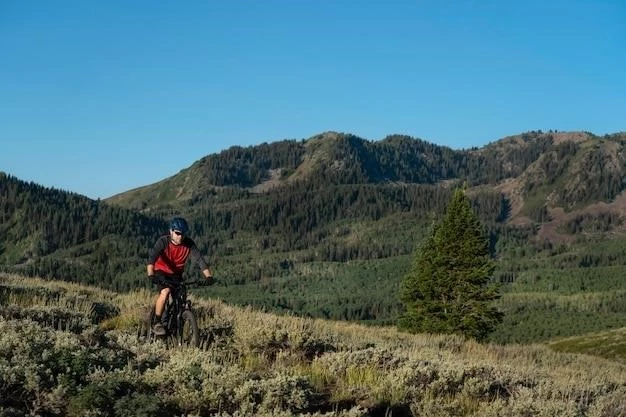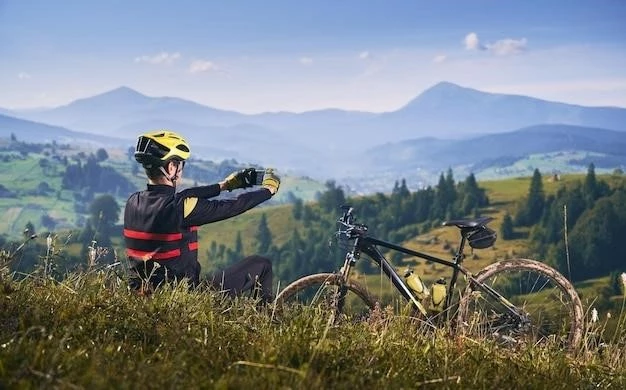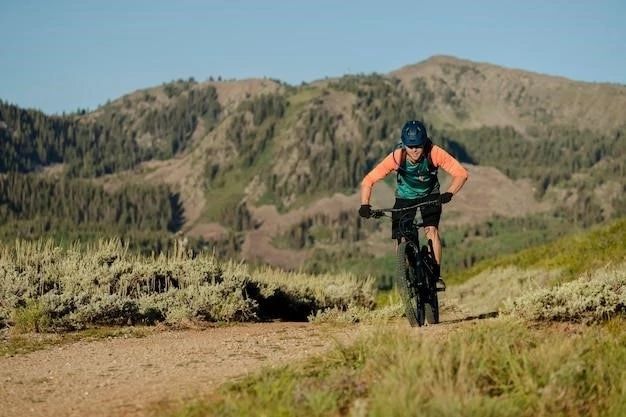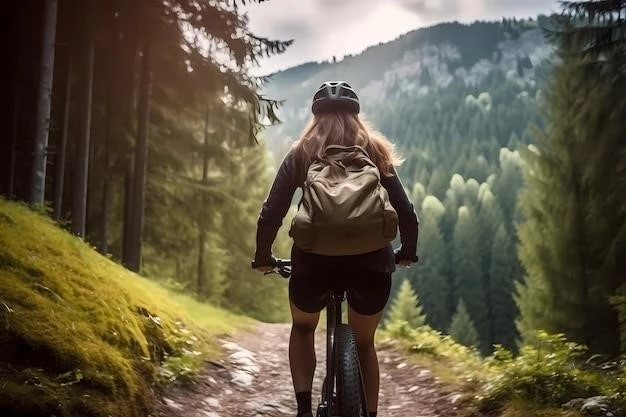Top-Ranked Destinations Based on Rider Data
As mountain biking’s popularity continues to surge, data from riders themselves reveals some clear favorites among destinations worldwide. Whistler, British Columbia, remains a perennial top choice, renowned for its extensive trail network and iconic downhill tracks. The 2024 UCI Mountain Bike World Series calendar highlights the global appeal of the sport, with events spanning from Brazil to Austria, showcasing diverse terrains and riding experiences. Rider data consistently points to locations like these as offering exceptional mountain biking adventures.
Emerging Hotspots for Mountain Biking
While established mountain biking destinations continue to thrive, the global mountain biking community is always on the lookout for new and exciting terrains to conquer. Several locations are rapidly gaining recognition for their exceptional trail systems, breathtaking scenery, and growing biking cultures.
One such gem is Peru, a country brimming with ancient history, vibrant culture, and, increasingly, world-class mountain biking trails. From the majestic Andes Mountains to the lush cloud forests, Peru offers a diverse range of riding experiences. The country’s commitment to sustainable tourism is also evident in its growing network of eco-friendly bike lodges and tour operators.
New Zealand, already renowned for its adventure tourism offerings, is also experiencing a surge in mountain biking popularity. With its stunning landscapes, ranging from volcanic peaks to pristine coastlines, New Zealand provides a picturesque backdrop for unforgettable rides. The country’s well-maintained trail networks cater to all skill levels, making it an ideal destination for both seasoned riders and those new to the sport.
Closer to home, Carson Valley, Nevada, is emerging as a must-visit destination for mountain biking enthusiasts. With its extensive network of trails winding through the Sierra Nevada foothills, Carson Valley offers a variety of challenges and breathtaking views. The region’s commitment to promoting mountain biking is evident in its well-maintained trails and growing number of bike-friendly amenities.
These emerging hotspots represent the dynamic and evolving nature of mountain biking. As riders seek new adventures and challenges, these destinations offer a glimpse into the future of the sport, where breathtaking landscapes, world-class trails, and thriving biking communities converge to create unforgettable riding experiences.
Classic Mountain Biking Trails Worth Revisiting
For seasoned mountain bikers, certain trails hold a revered status, etching themselves into memory with their iconic features and unforgettable challenges. These classic routes, often pioneers in the sport, continue to draw riders back year after year, offering a blend of nostalgia and the thrill of conquering familiar terrain.

Essential Gear for the Ultimate Mountain Biking Trip
Embarking on a mountain biking adventure, whether a weekend getaway or an extended expedition, requires careful consideration of essential gear. The right equipment ensures not only performance and enjoyment on the trails but also safety and preparedness for unexpected situations.
Selecting a mountain bike tailored to the specific terrain and riding style is paramount. Cross-country bikes excel on smoother trails and climbs, while trail bikes offer versatility for a mix of terrain. Enduro bikes are designed for aggressive descents and technical trails, and downhill bikes are purpose-built for gravity-fueled riding.
Protective gear is non-negotiable for any mountain biker. A well-fitting helmet is crucial, and additional protection such as knee and elbow pads, gloves, and eye protection significantly reduce the risk of injuries. Durable and comfortable riding apparel, including moisture-wicking layers and padded shorts, enhances comfort and performance.
Essential accessories for any mountain biking trip include a hydration pack or water bottles, a repair kit with spare tubes, a pump, and basic tools, and a first-aid kit. Navigation tools, such as a GPS device or a smartphone with a reliable mapping app, are invaluable, especially in unfamiliar terrain.
Investing in high-quality gear tailored to the specific demands of mountain biking ensures a safe, comfortable, and ultimately, more enjoyable riding experience.

Choosing the Right Mountain Bike for Your Needs
Selecting the right mountain bike is crucial for a fulfilling and enjoyable riding experience. With a diverse range of mountain bike types available, each tailored to specific terrains and riding styles, careful consideration of individual needs and preferences is essential.
Cross-country (XC) bikes are designed for speed and efficiency on smoother trails and climbs. They typically feature lightweight frames, front or full suspension with limited travel, and a focus on pedaling efficiency. XC bikes are ideal for riders who prioritize fitness, endurance, and covering long distances.
Trail bikes strike a balance between climbing ability and descending prowess, making them versatile options for a variety of terrains. They generally have more suspension travel than XC bikes, slacker head angles for stability on descents, and wider tires for increased traction. Trail bikes are suitable for riders who enjoy a mix of climbs, descents, and technical sections.
Enduro bikes are built for aggressive descending and tackling challenging, technical trails. They feature long-travel suspension, slack head angles, and durable components to withstand rough riding. Enduro bikes are ideal for riders who prioritize descending and seek adrenaline-pumping rides.
Downhill bikes are purpose-built for high-speed descents and gravity-fueled riding. They have the most suspension travel of all mountain bike types, slack head angles, and robust frames and components. Downhill bikes are best suited for riders who primarily focus on downhill riding in bike parks or on dedicated downhill trails.
Factors such as riding style, preferred terrain, budget, and experience level all play a role in choosing the right mountain bike. Consulting with experienced riders or visiting a reputable bike shop can provide valuable insights and guidance in making an informed decision.
Protective Gear and Essential Accessories
Safety and preparedness are paramount in mountain biking. Alongside a well-maintained bike, protective gear and essential accessories are non-negotiable for any off-road adventure. Prioritizing these items ensures a safer and more enjoyable riding experience.

Training and Preparation for Mountain Biking Adventures
Mountain biking, particularly on challenging terrains and extended rides, demands a degree of physical fitness and technical proficiency. Adequate training and preparation are essential to maximize enjoyment, enhance performance, and minimize the risk of injuries.
Building a strong aerobic base is crucial for tackling long climbs and maintaining endurance throughout rides. Incorporate activities such as road cycling, running, or swimming into your training regimen to improve cardiovascular fitness. Focus on gradually increasing the duration and intensity of your workouts to build stamina.
Strength training is equally important for mountain biking, as it enhances power output, improves handling, and reduces the risk of overuse injuries. Incorporate exercises that target major muscle groups used in cycling, such as squats, lunges, deadlifts, and core work. Aim for two to three strength training sessions per week, allowing for adequate rest and recovery.
Developing essential mountain biking skills is crucial for navigating technical sections and handling various trail conditions. Practice fundamental techniques such as body positioning, cornering, braking, and gear shifting in a controlled environment before venturing onto challenging trails. Consider taking a skills clinic or seeking guidance from experienced riders to refine your technique.
Proper nutrition and hydration are essential for optimizing performance and recovery. Consume a balanced diet rich in carbohydrates, protein, and healthy fats to fuel your rides and support muscle recovery. Stay adequately hydrated by drinking plenty of water before, during, and after rides, especially in hot or humid conditions.
By incorporating these training and preparation strategies, mountain bikers can enhance their fitness, refine their skills, and ensure they are well-prepared to tackle the challenges and rewards of their next off-road adventure.
Building Endurance and Strength for Challenging Trails
Conquering challenging mountain biking trails demands a combination of physical and mental fortitude. Building a solid foundation of endurance and strength is crucial for tackling steep climbs, navigating technical descents, and maintaining momentum throughout long rides.
Endurance, the ability to sustain prolonged physical exertion, is paramount in mountain biking. Incorporate regular cardiovascular exercise into your training regimen to improve your aerobic capacity. Engage in activities such as road cycling, running, swimming, or hiking, gradually increasing the duration and intensity over time.
Strength training is equally important, as it enhances power output, improves bike handling, and reduces the risk of injuries. Focus on exercises that target major muscle groups used in cycling, including:
- Legs: Squats, lunges, deadlifts, calf raises
- Core: Planks, crunches, Russian twists
- Upper body: Push-ups, pull-ups, rows
Aim for two to three strength training sessions per week, allowing for adequate rest and recovery between workouts. Gradually increase the weight, repetitions, or resistance as your strength improves.
Incorporate hill training into your rides to build leg strength and endurance. Find a challenging climb and repeat it multiple times, focusing on maintaining a steady pace and efficient pedaling technique. Interval training, alternating between high-intensity bursts and periods of recovery, is another effective method for improving both endurance and strength.
Remember to listen to your body and gradually increase your training volume and intensity. Adequate rest, recovery, and proper nutrition are essential for maximizing your training gains and preventing injuries.
Essential Mountain Biking Skills to Master
Beyond physical fitness, mastering essential mountain biking skills is crucial for navigating technical terrain, maintaining control, and enhancing safety on the trails. These skills, honed through practice and proper technique, empower riders to confidently handle diverse trail conditions and challenges.

Planning Your Mountain Biking Adventure
A successful mountain biking adventure requires careful planning, whether it’s a weekend getaway or an extended expedition. From choosing the right destination to packing essential gear and prioritizing safety, thoughtful preparation enhances enjoyment and minimizes potential challenges on the trails.
Begin by researching potential destinations, considering factors such as trail difficulty, scenery, altitude, climate, and accessibility. Online resources, mountain biking forums, and guidebooks offer valuable insights into trail systems, riding conditions, and local amenities.

Once a destination is chosen, create a realistic itinerary based on your fitness level, riding experience, and available time. Factor in travel time, rest days, and potential weather contingencies. Research accommodation options, ranging from campgrounds to bike-friendly hotels, and make reservations in advance, especially during peak seasons.
Pack essential gear, including a well-maintained mountain bike, appropriate clothing for all weather conditions, protective gear, hydration and nutrition, a repair kit, and navigation tools. Consider the specific demands of the terrain and climate when packing.
Prioritize safety by informing someone of your itinerary, checking weather forecasts, and carrying a first-aid kit. Familiarize yourself with basic bike mechanics and trail etiquette. Consider taking a skills clinic or hiring a guide, especially if riding in unfamiliar or challenging terrain.
By investing time in thorough planning, mountain bikers can embark on their adventures with confidence, knowing they have taken the necessary steps to maximize enjoyment, ensure safety, and create lasting memories on the trails.
Factors to Consider When Choosing a Destination
Selecting the ideal mountain biking destination involves careful consideration of several factors to ensure the experience aligns with your riding style, preferences, and skill level. From the character of the trails to logistical aspects, each element contributes to a fulfilling and enjoyable adventure.
Trail Difficulty and Type: Mountain biking trails are categorized by difficulty levels, typically ranging from beginner-friendly green trails to extremely challenging black diamond or double-black diamond trails. Assess your skill level honestly and choose trails that align with your abilities. Additionally, consider the type of trails, such as cross-country, downhill, or all-mountain, to match your riding style and preferences.
Scenery and Surroundings: Mountain biking offers a unique opportunity to immerse oneself in nature. Consider the scenery and surroundings that appeal to you, whether it’s towering mountains, lush forests, desert landscapes, or coastal views. Research the flora and fauna of the region to enhance your appreciation of the natural environment.
Climate and Seasonality: Climate plays a crucial role in the mountain biking experience. Research the typical weather patterns, temperature ranges, and precipitation levels during your intended travel dates. Consider factors such as altitude, humidity, and potential for extreme weather conditions.
Accessibility and Logistics: Consider the accessibility of the destination, including transportation options, proximity to airports or major cities, and availability of bike rentals or shuttles. Research accommodation options, ranging from campgrounds to bike-friendly hotels, and book in advance, especially during peak seasons.
Local Amenities and Infrastructure: Evaluate the availability of local amenities and infrastructure that enhance the mountain biking experience. These may include bike shops, restaurants, grocery stores, medical facilities, and cell phone reception. Research the local biking community and the availability of guided tours or group rides.
Creating a Realistic Itinerary and Budget
A well-structured itinerary and a realistic budget are essential for a successful and enjoyable mountain biking adventure. A thoughtfully crafted plan ensures that you make the most of your time on the trails while staying within your financial means.
Itinerary Planning: Begin by determining the duration of your trip and the number of riding days. Factor in travel time to and from the destination, rest days for recovery, and potential weather contingencies. Research trail options and prioritize those that align with your skill level and interests. Consider the time required for each trail, including breaks and potential photo opportunities.
Daily Ride Planning: Structure each riding day with a realistic assessment of your fitness level and the demands of the trails. Factor in elevation gain, technical difficulty, and trail distance. Avoid overexertion, especially in challenging conditions or at high altitudes. Allocate ample time for breaks, hydration, and enjoying the scenery.
Budgeting: Establish a realistic budget that encompasses all aspects of your trip, including transportation, accommodation, meals, bike rentals (if applicable), lift tickets (for bike parks), gear, and incidentals. Research the costs associated with your chosen destination and adjust your spending accordingly. Consider packing snacks and beverages to minimize expenses on the trails.
Contingency Planning: It’s wise to incorporate some flexibility into your itinerary and budget to account for unforeseen circumstances, such as mechanical issues, weather delays, or changes in trail conditions. Allocate a buffer for unexpected expenses. Consider travel insurance to mitigate financial risks associated with trip cancellations or medical emergencies.
Safety Tips for Mountain Biking in Unfamiliar Terrain
Venturing into unfamiliar terrain on a mountain bike offers a sense of adventure and discovery, but it also presents unique challenges and potential hazards. Prioritizing safety is paramount to ensure an enjoyable and incident-free ride.
Pre-Ride Preparation: Before setting out, thoroughly research the trail system, including difficulty levels, technical features, and potential hazards. Check weather forecasts and trail conditions, and be prepared for changing weather patterns. Inform someone of your itinerary, estimated return time, and contact information.
Navigation and Communication: Carry a reliable navigation device, such as a GPS unit or a smartphone with a mapping app, and familiarize yourself with the route beforehand. Ensure your phone is fully charged and consider carrying a portable charger. In remote areas, a satellite communication device, such as a SPOT or inReach, can provide peace of mind in case of emergencies.
Bike Maintenance and Gear: Conduct a thorough bike check before each ride, ensuring tires are properly inflated, brakes are functioning correctly, and gears are shifting smoothly. Carry a basic repair kit, including spare tubes, a pump, and essential tools. Wear a helmet at all times and consider additional protective gear, such as knee and elbow pads.
Trail Awareness and Etiquette: Ride within your abilities and be prepared for unexpected obstacles or changes in terrain. Stay alert for wildlife, hikers, and other trail users, and yield appropriately. Leave no trace by packing out all trash and minimizing your impact on the environment.
Hydration and Nutrition: Carry ample water and snacks to stay hydrated and energized throughout your ride, especially in hot or humid conditions. Electrolyte drinks can help replenish essential minerals lost through sweat. Adjust your food and water intake based on the duration and intensity of your ride.










